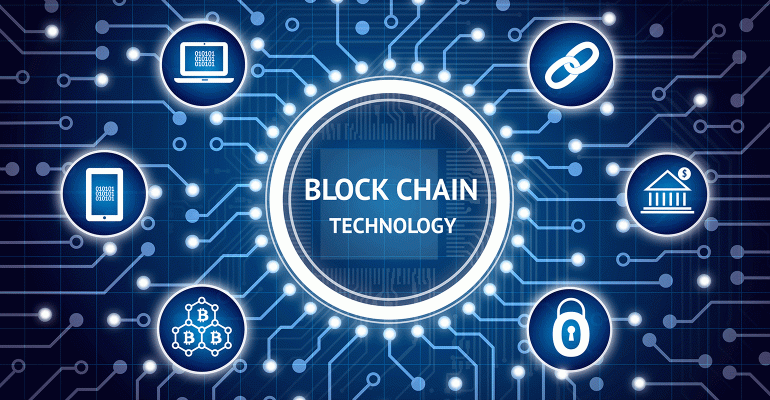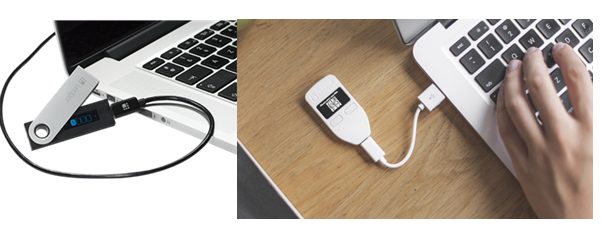While searching about Blockchain Technology, you have landed on the right page to know about Blockchain and its underlying technology. These days this word BLOCKCHAIN is becoming very popular because it is behind the first ever launched decentralized cryptocurrency, Bitcoin.
Even though Bitcoin was developed in 2009, I have heard about Bitcoin in May 2017 when many computers were hacked by injecting the WannaCry ransomware virus worldwide. It targeted computers running the Microsoft Windows operating system by encrypting data and the amount demanded by hackers was not in USD or EURO but in Bitcoin(BTC)

From there onwards I started taking interest about Bitcoin and its underlying technology. I was excited to know that what kind of currency is this since earlier I have heard about only centralized currencies but this was totally a different concept to know about. Lets get started:
What is Blockchain Technology?

A blockchain, is a continuously growing list of records, called blocks, which are linked and secured using cryptography. Each block typically contains a cryptographic hash of the previous block, a timestamp, and transaction data.
By design, a blockchain is resistant to modification of the data. It is "an open, distributed ledger that can record transactions between two parties efficiently and in a verifiable and permanent way". For use as a distributed ledger, a blockchain is typically managed by a peer-to-peer network collectively adhering to a protocol for inter-node communication and validating new blocks.
Once recorded, the data in any given block cannot be altered retroactively without alteration of all subsequent blocks, which requires consensus of the network majority.
Let’s recall a few key features before we get into the details:

- Blockchain keeps a record of all data exchanges — this record is referred to as a “Ledger” in the cryptocurrency world, and each data exchange is a “transaction“. Every verified transaction is added to the ledger as a “block”
- It utilizes a distributed system to verify each transaction — a peer-to-peer network of nodes
- Once signed and verified, the new transaction is added to the blockchain and cannot be altered once it is stored on the public ledger.
To begin, we need to explore the concept of “keys”. With a set of cryptographic keys, you get a unique identity. Your keys are the Private Key and Public Key, and together they are combined to give you a digital signature. Your public key is how others are able to identify you. Your private key gives you the power to digitally sign and authorize different actions on behalf of this digital identity when used with your public key.
In the cryptocurrency world, this represents your wallet address (public key) and your private key is what let’s you authorize transfers, withdrawals, and other actions with your digital property like cryptocurrencies. As an aside, this is why it’s so important to keep your private key safe — anyone who has your private key can use it to access any of your digital assets associated with your public key and do what they want with it!
Everytime a transaction occurs, that transaction is signed by whoever is authorizing it. That transaction might be something like “Person A is sending 0.5 BTC to Person B”, will include B’s address (public key), and will be signed by a digital signature using both A’s public key and private key. This gets added to the ledger of that blockchain that A sent 0.5 BTC to B, and will also include a timestamp and a unique ID number. When this transaction occurs, it is broadcasted to a peer-to-peer network of nodes — basically other digital entities that acknowledge that this transaction has occurred and adds it to the ledger.
“Any Bitcoin transaction can be seen on WWW.BLOCKCHAIN.INFO with all necessary details using the Transaction ID/Hash ID”
Types of Wallets to store Cryptocurrencies:

- Hot Wallet (Online)– This is the wallet created on a Cryptocurrency exchange. Each currency has different wallet address to send and receive any cryptocurrency. In this case you do not have full control on your wallet as the exchanges are managing it in some way.
- Cold Wallet (Offline) – This includes any hardware wallet/device to store cryptocurrencies. You have full control over it as you secure this wallet using a Private key. Recommended wallets are Trezor and Nano S Ledger.
- Paper Wallet- A paper wallet is a document containing all of the data necessary to generate any number of Bitcoin private keys, forming a wallet of keys. However, people often use the term to mean any way of storing bitcoins offline as a physical document.
I am not discussing here on how to setup these different wallets.
However, there are a lot of developers, users, and enthusiasts who truly believe blockchain technology is the future. Many of us want to see this technology getting success, so stay tuned for new developments.
Hope you have found this content useful. If really, then please let me know by giving us the useful feedback and upvotes. You can also ask in case if you have questions related to Blockchain Technology.
Thanks,
Team Success Perks
✅ @successperks, I gave you an upvote on your post! Please give me a follow and I will give you a follow in return and possible future votes!
Thank you in advance!
Downvoting a post can decrease pending rewards and make it less visible. Common reasons:
Submit
valuable info..
Thanks!
Downvoting a post can decrease pending rewards and make it less visible. Common reasons:
Submit
Thanks !
Downvoting a post can decrease pending rewards and make it less visible. Common reasons:
Submit